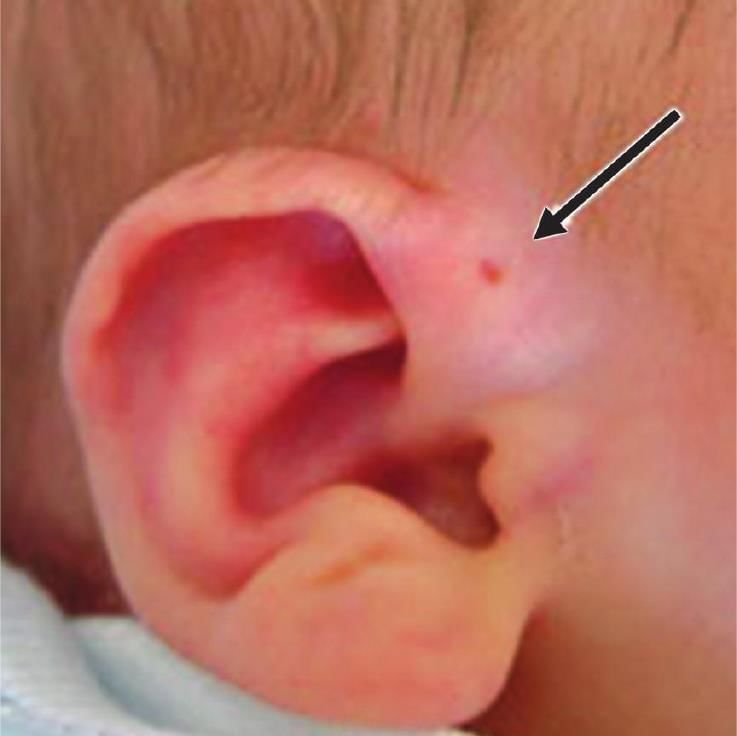NEET PG Exam > NEET PG Tests > Test: Embryology and Anatomy of Ear - 1 - NEET PG MCQ
Test: Embryology and Anatomy of Ear - 1 - NEET PG MCQ
Test Description
25 Questions MCQ Test - Test: Embryology and Anatomy of Ear - 1
Test: Embryology and Anatomy of Ear - 1 for NEET PG 2025 is part of NEET PG preparation. The Test: Embryology and Anatomy of Ear - 1 questions and answers have been prepared
according to the NEET PG exam syllabus.The Test: Embryology and Anatomy of Ear - 1 MCQs are made for NEET PG 2025 Exam.
Find important definitions, questions, notes, meanings, examples, exercises, MCQs and online tests for Test: Embryology and Anatomy of Ear - 1 below.
Solutions of Test: Embryology and Anatomy of Ear - 1 questions in English are available as part of our course for NEET PG & Test: Embryology and Anatomy of Ear - 1 solutions in
Hindi for NEET PG course.
Download more important topics, notes, lectures and mock test series for NEET PG Exam by signing up for free. Attempt Test: Embryology and Anatomy of Ear - 1 | 25 questions in 25 minutes | Mock test for NEET PG preparation | Free important questions MCQ to study for NEET PG Exam | Download free PDF with solutions
Detailed Solution for Test: Embryology and Anatomy of Ear - 1 - Question 1
Test: Embryology and Anatomy of Ear - 1 - Question 2
True regarding, the marked below is: (MAHE 2007, 2015)


Detailed Solution for Test: Embryology and Anatomy of Ear - 1 - Question 2
Test: Embryology and Anatomy of Ear - 1 - Question 3
External auditory canal is formed by: (MH 2007, 2015)
Detailed Solution for Test: Embryology and Anatomy of Ear - 1 - Question 3
Test: Embryology and Anatomy of Ear - 1 - Question 4
Call Aural fistula is: (JIPMER 2004, 2010)
Detailed Solution for Test: Embryology and Anatomy of Ear - 1 - Question 4
Test: Embryology and Anatomy of Ear - 1 - Question 5
A newborn presents with bilateral microtia and external auditory canal atresia. Corrective surgery is usually performed at: (AI 2007, 2013)
Detailed Solution for Test: Embryology and Anatomy of Ear - 1 - Question 5
*Multiple options can be correct
Test: Embryology and Anatomy of Ear - 1 - Question 6
Eustachian tube develops from: (PGI 97, 2011)
Detailed Solution for Test: Embryology and Anatomy of Ear - 1 - Question 6
Test: Embryology and Anatomy of Ear - 1 - Question 7
The proximal part of Tubotympanic recess leads to the formation of: (MH 2014)
Detailed Solution for Test: Embryology and Anatomy of Ear - 1 - Question 7
Test: Embryology and Anatomy of Ear - 1 - Question 8
The following structure represents all the three components of the embryonic disc: (TN 98, 2010)
Detailed Solution for Test: Embryology and Anatomy of Ear - 1 - Question 8
Detailed Solution for Test: Embryology and Anatomy of Ear - 1 - Question 9
*Multiple options can be correct
Test: Embryology and Anatomy of Ear - 1 - Question 10
True regarding development of the ear: (PGI 2007, 2012)
Test: Embryology and Anatomy of Ear - 1 - Question 11
Korner’s septum is seen in: (PGI 99, 2013)
Detailed Solution for Test: Embryology and Anatomy of Ear - 1 - Question 11
Test: Embryology and Anatomy of Ear - 1 - Question 12
All of the following are of the size of adult at birth except: (APPG 06, 2011)
Detailed Solution for Test: Embryology and Anatomy of Ear - 1 - Question 12
Test: Embryology and Anatomy of Ear - 1 - Question 13
Which of the following attains adult size before birth? (Exam 2013)
Detailed Solution for Test: Embryology and Anatomy of Ear - 1 - Question 13
Test: Embryology and Anatomy of Ear - 1 - Question 14
Which of the following attains adult size before birth? (AI 2007, 2010)
Detailed Solution for Test: Embryology and Anatomy of Ear - 1 - Question 14
Test: Embryology and Anatomy of Ear - 1 - Question 15
Inner ear is present in which bone: (PGI 97, 2009)
Test: Embryology and Anatomy of Ear - 1 - Question 16
Inner ear bony labyrinth is: (Karnataka 2006, 2011)
Detailed Solution for Test: Embryology and Anatomy of Ear - 1 - Question 16
Test: Embryology and Anatomy of Ear - 1 - Question 17
Which of the following is not a pneumatic bone? (AP 2009, 2012)
Detailed Solution for Test: Embryology and Anatomy of Ear - 1 - Question 17
Test: Embryology and Anatomy of Ear - 1 - Question 18
Crus commune is a part of: (Jharkhand 2006, 2015)


Detailed Solution for Test: Embryology and Anatomy of Ear - 1 - Question 18
Test: Embryology and Anatomy of Ear - 1 - Question 19
Endolymphatic duct connects which structure: (Delhi 2005, Exam 2017)
Test: Embryology and Anatomy of Ear - 1 - Question 20
Not included in bony labyrinth: (AI 2006, Exam 2017)
Detailed Solution for Test: Embryology and Anatomy of Ear - 1 - Question 20
Test: Embryology and Anatomy of Ear - 1 - Question 21
The bony cochlea is a coiled tube making ... turns around a bony pyramid called ____: (MH 2003, Exam 2017)
Detailed Solution for Test: Embryology and Anatomy of Ear - 1 - Question 21
Test: Embryology and Anatomy of Ear - 1 - Question 22
Organ of Corti is situated in: (Kerala 98, Exam 2017)
Detailed Solution for Test: Embryology and Anatomy of Ear - 1 - Question 22
Test: Embryology and Anatomy of Ear - 1 - Question 23
Foetus starts hearing by what time in intrauterine life: (Exam 2011)
Detailed Solution for Test: Embryology and Anatomy of Ear - 1 - Question 23
Detailed Solution for Test: Embryology and Anatomy of Ear - 1 - Question 24
Test: Embryology and Anatomy of Ear - 1 - Question 25
Semicircular canals are stimulated by: (MP 2000, Exam 2013)


Detailed Solution for Test: Embryology and Anatomy of Ear - 1 - Question 25
Information about Test: Embryology and Anatomy of Ear - 1 Page
In this test you can find the Exam questions for Test: Embryology and Anatomy of Ear - 1 solved & explained in the simplest way possible.
Besides giving Questions and answers for Test: Embryology and Anatomy of Ear - 1, EduRev gives you an ample number of Online tests for practice
Download as PDF















